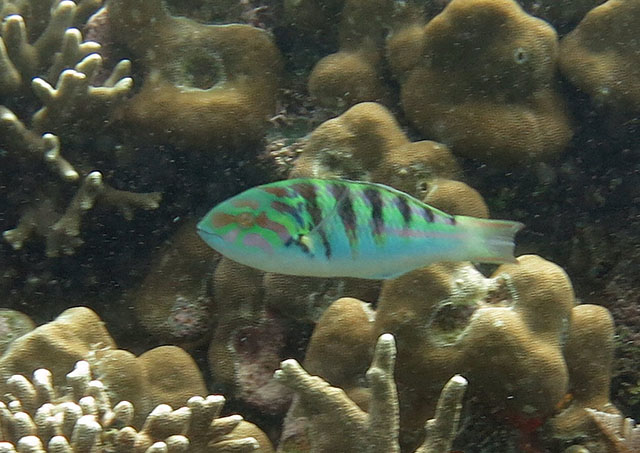| Labridae (Wrasses), subfamily: Corinae |
| 25 cm TL (male/unsexed) |
|
reef-associated; marine; depth range 0 - 15 m, non-migratory |
| Indo-Pacific: East Africa to the Line and Tuamoto islands, north to southern Japan, south to the Lord Howe and Austral islands. |
|
Dorsal spines (total): 8-8; Dorsal soft rays (total): 12-14; Anal spines: 3-3; Anal soft rays: 11-11. Color pattern remains similar with growth with terminal males becoming gaudier than primary males (Ref. 37816). Pale green with 6 dark bars, last two as saddles over the tail. Head with pink bands radiating from eye in large adults (Ref. 48636). |
| Occurs in shallow lagoon and seaward reefs, slopes and along drop-offs to moderate depths. Occurs in small, loose groups (Ref. 48636). Feeds on benthic and planktonic crustaceans, small fishes, and foraminiferans. |
|
Least Concern (LC); Date assessed: 12 June 2008 Ref. (130435)
|
| harmless |
Source and more info: www.fishbase.org. For personal, classroom, and other internal use only. Not for publication.

